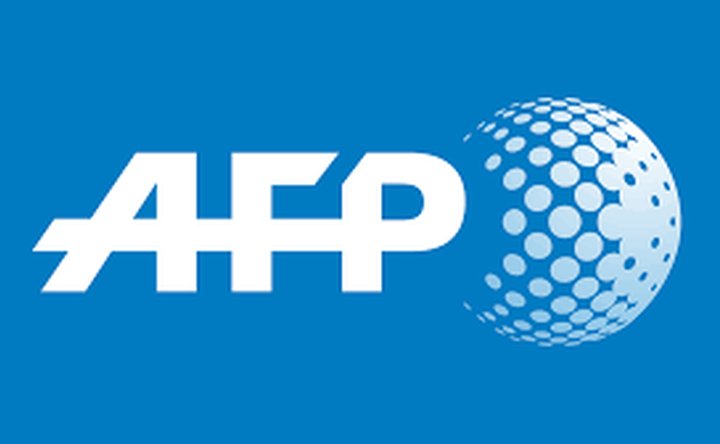Chinese arms deliveries to Africa put on hold
France, Britain and the US on 14 June 2018 put a hold on a request from the Central African Republic (CAR) for UN Security Council approval of Chinese weapons deliveries for its national forces.
CAR's defence minister asked a UN sanctions committee on 5 June to grant an exemption to an arms embargo and allow the shipments of Chinese-made armoured vehicles, machine guns, tear gas grenades and other weaponry for its army and police.
France said it had ‘concerns concerning some lethal equipment included in this exemption request,’ citing anti-aircraft weapons and ammunitions, according to a document obtained by AFP.
The French mission to the UN requested ‘additional justifications concerning this lethal equipment in order to be able to take a decision.’
The US noted that there was ‘no threat of an air attack in CAR’ and questioned deliveries of eight grenade launchers, four anti-aircraft machine guns as well as anti-personnel grenades and rockets.
Britain said it was concerned that the shipments would pass through Cameroon unescorted to the border with CAR.
In her request to the UN, CAR Defence Minister Marie Noelle Koyara said the weaponry would help strengthen national forces who are ‘confronted with the strength and escalating violence of armed groups whose illegal activities pose a threat to civil order.’
The council imposed an arms embargo on the CAR in 2013 when the country descended into bloodshed but its sanctions committee in 2017 gave the green light for Russia to supply weapons to the national forces.
China wants to donate military equipment which includes 12 armoured vehicles and four assault vehicles, 50 pistols, six sniper rifles, ten submachine guns with silencers and some 30 machine guns of various calibres.
The list of equipment from China's Poly Technologies also includes 300 rockets, 500 anti-tank grenades, some 725,000 rounds of ammunition of various types and 15,000 tear gas grenades.
The request for the Chinese weaponry is backed by a European Union military training mission and by the UN peacekeeping operation MINUSCA, which has come under repeated attacks from armed groups. Five peacekeepers have been killed in 2018.
In its note detailing objections, the US mission to the UN argued that special training was needed to operate the grenade launchers ‘which we are not certain has been provided.’
Most of the armoured vehicles and other weaponry would be used by special forces trained by Rwanda and certified by the EU training mission. Units of CAR's gendarmerie and police were trained by the UN police.
In her request, the defence minister argued that tear gas would help gendarmerie and police deal with crowd control as the ‘units do not currently possess any of this equipment designed to maintain order.’
The CAR exploded into violence following the 2013 overthrow of longtime leader Francois Bozize, prompting France to intervene with its Operation Sangaris.
MINUSCA took over an African Union-led mission in 2014, deploying some 12,000 troops and police, but the country remains overrun with militias, many of whom claim to protect Christian or Muslim communities.
CAR's leaders have repeatedly asked the Security Council to ease the arms embargo to allow shipments of equipment that will beef up the national forces.
More from Land Warfare
-
![NATO and Europe step up UGV efforts]()
NATO and Europe step up UGV efforts
The effort to develop uncrewed ground vehicles (UGVs) is heating up with research efforts and exercises improving the speed of the process and the war in Ukraine is working as a proving ground for rapid development and fielding.
-
![Ireland’s Reamda develops new version of Riddler UGV]()
Ireland’s Reamda develops new version of Riddler UGV
The company's Riddler uncrewed ground vehicle (UGV) is designed to be small and light to allow easy deployment and the ability to access smaller areas such as bus or train aisles.
-
![Spain to invest billions of dollars on howitzers and other vehicles as it looks to select new tanks]()
Spain to invest billions of dollars on howitzers and other vehicles as it looks to select new tanks
The Spanish Government has outlined plans to purchase communications and cybersecurity capabilities but most notably amphibious combat vehicles, self-propelled howitzers (SPHs), bridge-laying vehicles and an effort to replace its tanks from 2040.
-
![What does Germany’s new tank joint venture mean for MGCS?]()
What does Germany’s new tank joint venture mean for MGCS?
Germany is Europe’s leading country for tank manufacture and until this month was committed to the Franco-German Main Ground Combat System (MGCS) which included tanks and other vehicles. Earlier this month, Germany and other European countries set up the Main ARmoured Tank of Europe (MARTE) project casting a shadow over the MGCS.
-
![CAVS rolls on as Denmark orders 129 vehicles]()
CAVS rolls on as Denmark orders 129 vehicles
Denmark signed the Technical Arrangement for the multinational Common Armoured Vehicle System (CAVS) in April this year. The order means the country will receive its first vehicle this year.
























